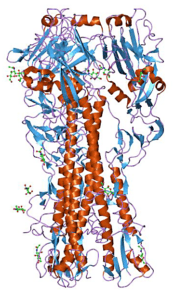Influenza has found ways to escape the immune response by constantly changing its genome, which has made a seasonal influenza vaccine necessary for protection from the virus. Scientists from the University of California and Harvard University have found a mechanism used by cells to control Influenza A. This study sheds light into how humans may be able to control other RNA viral infections too.
Virus-derived small interfering RNA (vsiRNA) are 21-24 nucleotide long pieces of RNA which can be used as markers of the induction of anti-viral interfering RNA (iRNA). They can also be used to determine the mechanisms behind this defense strategy.
Previous studies have shown that iRNA is able to kill viruses in a range of organisms including plants and worms. For a virus to successfully establish infection, it must suppress the iRNA. Mouse models have confirmed that iRNA are able to kill viruses but the same had not been shown in humans.
The scientists investigated whether Influenza A infection, as well as other RNA viral infections, induced or suppressed iRNA in mature mammalian somatic cells. In this way, they would know if the previous data on the antiviral role of iRNA was the same in humans.
They found that a human form of the enzyme known as Dicer is involved in the process of generation of siRNA. The researchers used iRNA-deficient mice and found that RNA-virus infections were inhibited by iRNA. The antiviral effect of iRNA was conserved in mammals and therefore, could be used in the treatment of Influenza A and other RNA-viruses such as Ebola and Zika viruses.
Journal article: Li et al., 2016. Induction and suppression of antiviral RNA interference by influenza A virus in mammalian cells. Nature Microbiology
Article by Thandeka Moyo












